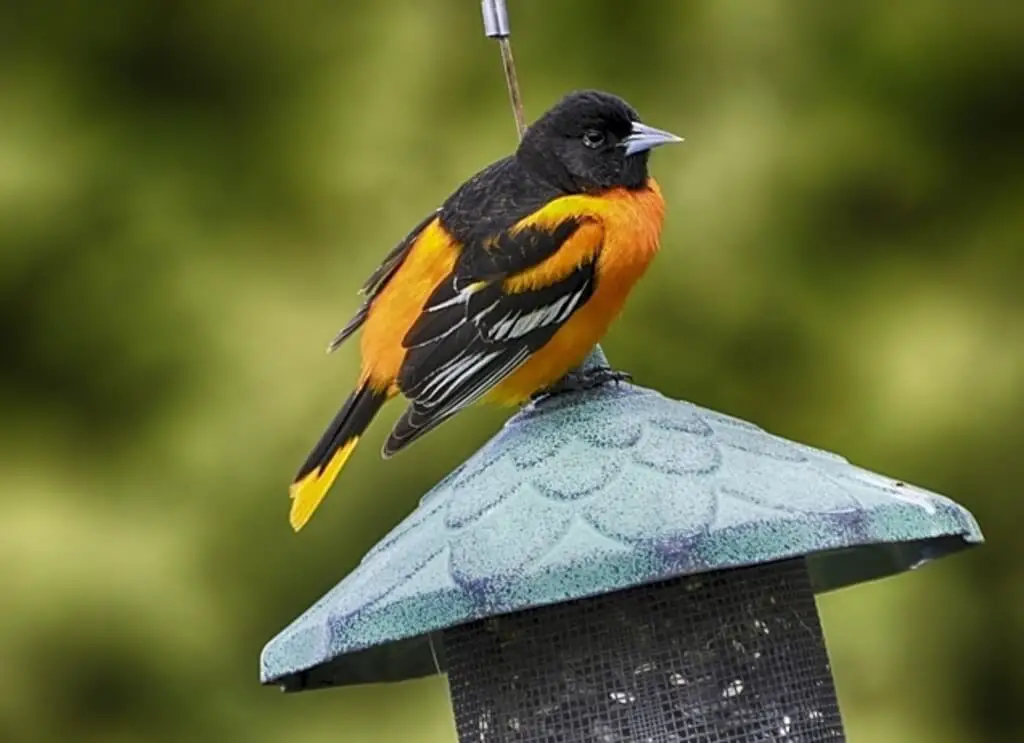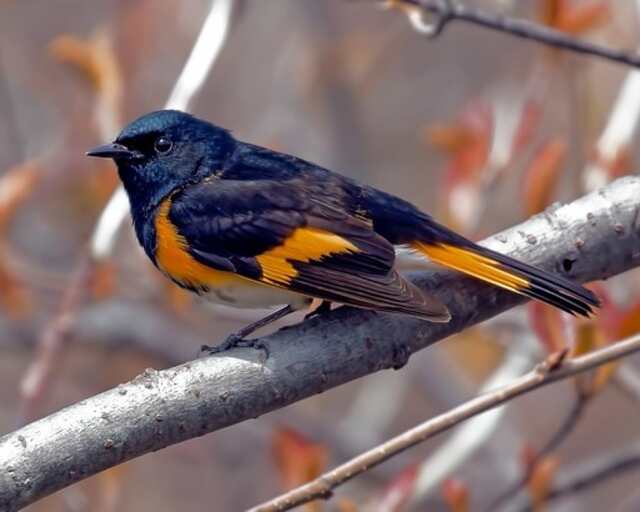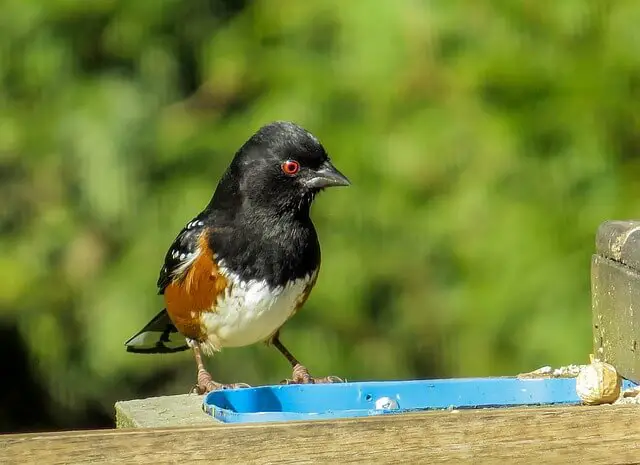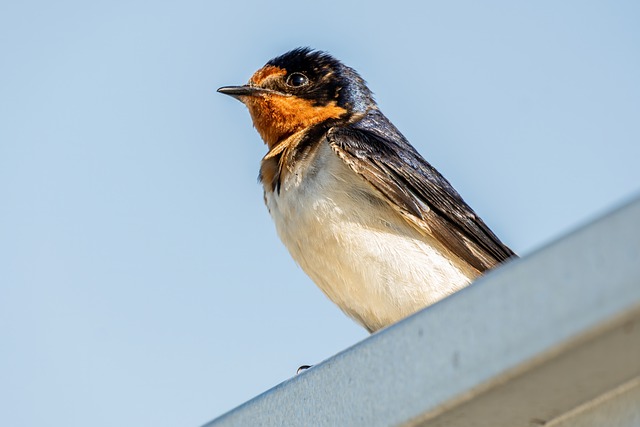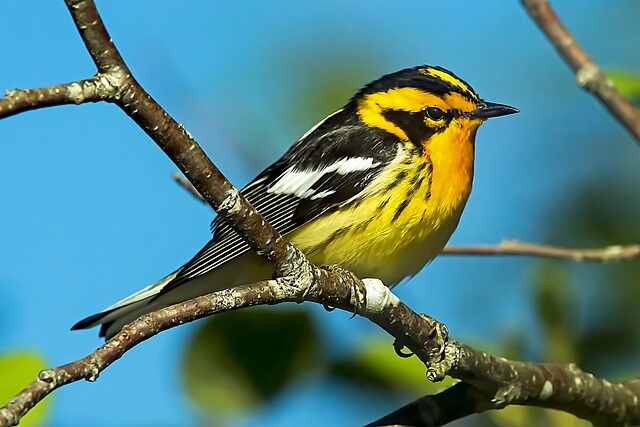The Oriole is a beloved bird known for its vibrant colors and sweet melodies. However, identifying an oriole can be tricky as there are many other birds that share similar features.
This guide presents a comprehensive list of 15 birds that look like orioles, including their distinguishing characteristics, range, habitat, and diet.
By the end of this article, you will have a deeper understanding of these birds and the skills to confidently identify them in the wild. So grab your binoculars and get ready to discover the world of oriole look-alikes!
Table of Contents
- 1 Baltimore Oriole (Overview)
- 2 Birds That Look Like Orioles
- 2.1 Yellow-headed Blackbird
- 2.2 American Redstart
- 2.3 American Goldfinch
- 2.4 Western Tanager
- 2.5 Varied Thrush
- 2.6 Golden-cheeked Warbler
- 2.7 American Robin
- 2.8 Black-headed Grosbeak
- 2.9 Evening Grosbeak
- 2.10 Spotted Towhee
- 2.11 Eastern Towhee
- 2.12 Barn Swallow
- 2.13 Blackburnian Warbler
- 2.14 Eastern Meadowlark
- 2.15 Western Meadowlark
- 3 Conclusion
- 4 Author
Baltimore Oriole (Overview)

The Baltimore Oriole is a medium-sized songbird that is commonly found in eastern North America. Its range extends from eastern Canada to the southern United States, where it prefers to live in open woodlands, forest edges, and orchards.
The Baltimore Oriole’s diet consists mainly of insects, fruit, and nectar. The male Baltimore Oriole is known for its striking orange and black plumage, while the female has a more muted yellowish-orange coloration.
These birds are known for their beautiful and complex songs, which they use to attract mates and defend their territories. Orioles are also known for their intricate, hanging basket-shaped nests, which they weave together using grasses and other plant materials.
How to Attract Baltimore Orioles:
- To attract Baltimore Orioles, provide a nectar feeder and offer fresh fruit like oranges, grapes, and bananas. They also enjoy jelly and mealworms. Planting trees like oaks and maples provide good nesting sites, and hanging a half-cut orange on a branch can entice them with a sweet scent.
Birds That Look Like Orioles
Yellow-headed Blackbird
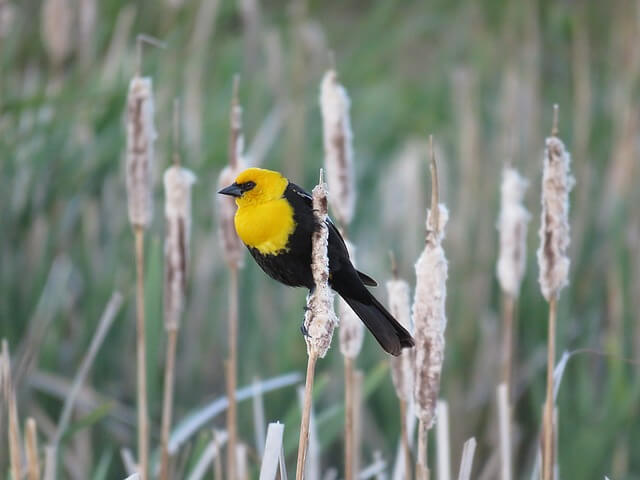
The Yellow-headed Blackbird (Xanthocephalus xanthocephalus) is a striking passerine bird found in wetland areas of North America, from Alaska to Mexico. The males are characterized by their distinctive bright yellow head and black body, while females have more muted yellow and brown plumage. They prefer to live in marshes, prairies, and wetlands, and feed primarily on seeds and insects.
Compared to the Oriole, the Yellow-headed Blackbird is a larger bird, measuring around 8.5-10.5 inches in length, and has a more limited range. While both species are found in wetland habitats, the Oriole can also be found in suburban areas with fruit-bearing trees. The Oriole feeds on nectar, fruit, and insects, while the Yellow-headed Blackbird is primarily omnivores.
The Oriole has a brighter orange coloration, while the Yellow-headed Blackbird has a striking black and yellow contrast. Finally, the Oriole is known for its beautiful singing, while the Yellow-headed Blackbird has a more raucous and harsh call.
American Redstart
The American Redstart (Setophaga ruticilla) is a small, migratory songbird found in North America. The male has a distinctive black-and-orange plumage, while the female is grayish-green. They inhabit deciduous forests, especially near water sources, and feed on insects, spiders, and fruit.
Their range stretches from southern Canada to northern South America, with the bulk of the population breeding in the eastern United States. In terms of similarities and differences to the Oriole, both species are migratory songbirds that feed on insects and fruit.
However, Orioles are larger, with a more vibrant orange plumage, and inhabit a broader range across the Americas. American Redstarts, on the other hand, prefer a narrower range of habitats and have a more distinctive black-and-orange plumage.
While both species have musical songs, the Oriole’s is often described as more melodic and flute-like compared to the Redstart’s high-pitched trill.
American Goldfinch
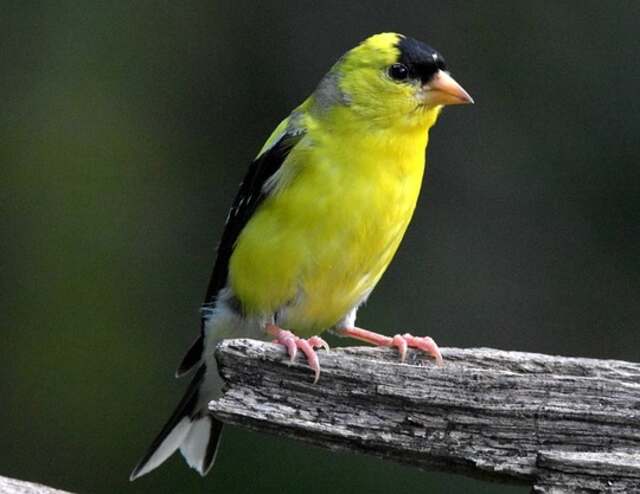
The American Goldfinch (Spinus tristis) is a small songbird found throughout North America. These birds are known for their bright yellow plumage and distinctive black and white wings, which become more muted during the winter months.
They prefer to live in open habitats such as fields, meadows, and gardens, and feed on seeds, particularly those of thistles and sunflowers. In terms of similarities and differences to the Oriole, the American Goldfinch is smaller in size, measuring around 5 inches in length compared to the Oriole’s 7–8 inches.
While both species have brightly colored plumage, the Oriole’s orange and black coloring sets it apart from the Goldfinch’s yellow and black.
Additionally, Oriole’s prefer to live in wooded areas and feed on nectar and insects, while the Goldfinch is a seed-eating specialist. Despite their differences, both birds are beautiful and fascinating to observe in the wild.
Read more: American Goldfinch Interesting Facts
Western Tanager
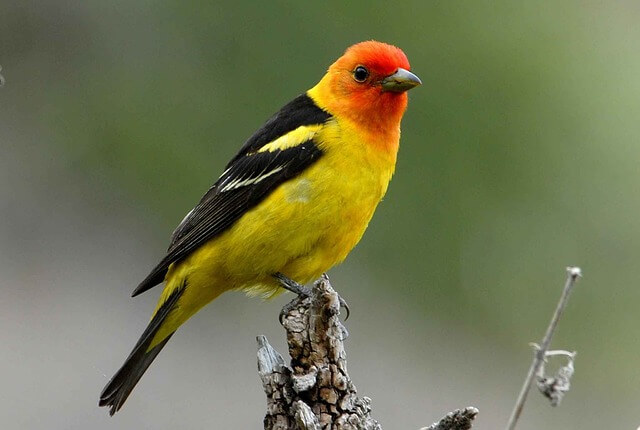
The Western Tanager (Piranga ludoviciana) is a brightly colored bird found in the western regions of North America, from Alaska to Mexico. Males have a striking combination of yellow and black on their wings, back, and head, with a vibrant red-orange color on their face and neck. Females have more muted colors, with a yellow-green body and gray wings.
They primarily feed on insects during the breeding season, and switch to fruits and berries during migration and in the winter. They prefer to nest in coniferous forests and woodland areas. While both the Western Tanager and the Oriole have brightly colored plumage, they differ in range, habitat, and diet.
The Oriole is primarily found in the eastern regions of North America and feeds mainly on nectar, fruit, and insects. In terms of appearance, the Oriole has a longer and more slender beak compared to the Western Tanager’s shorter and thicker beak.
While the Western Tanager prefers coniferous forests, the Oriole prefers wooded areas, gardens, and orchards. Despite their differences, both birds are known for their striking colors and beautiful songs.
Read more: How to Attract the Western Tanager to your yard? Expert Tips!
Varied Thrush
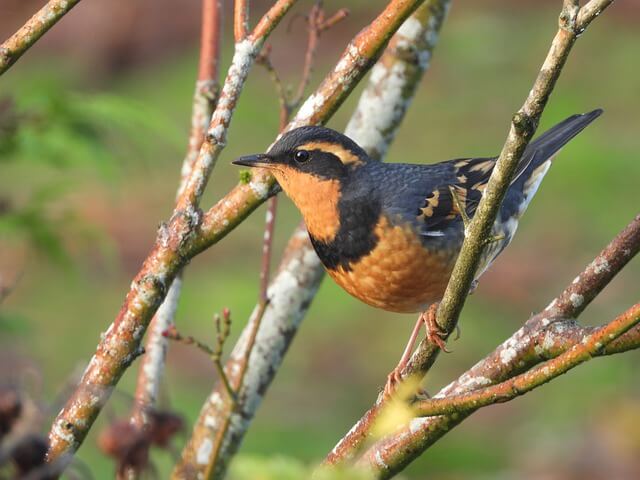
The Varied Thrush (Ixoreus naevius) is a medium-sized songbird native to the Pacific Northwest of North America. They are known for their striking orange and black plumage, with a distinctive white stripe above the eye. Varied Thrushes prefer to live in coniferous forests, particularly in areas with dense undergrowth and proximity to water.
Their diet consists of insects, berries, and seeds, and they are known to forage on the ground as well as in trees. Compared to the Oriole, the Varied Thrush has a more limited range, being primarily found in the Pacific Northwest, whereas the Oriole is found throughout the Americas.
The two species also have different habitats, with the Oriole preferring open woodlands and the Varied Thrush preferring dense forests. In terms of diet, the Oriole feeds primarily on nectar and insects, while the Varied Thrush has a more diverse diet including berries and seeds.
Additionally, the Oriole is known for its bright orange and black plumage, while the Varied Thrush has more muted orange and black coloring with a distinctive black magic marker looking stripe above the eye. Both species are known for their beautiful songs and migratory habits.
Read more: How to Attract Thrushes to your Garden – The Best Tips!
Golden-cheeked Warbler
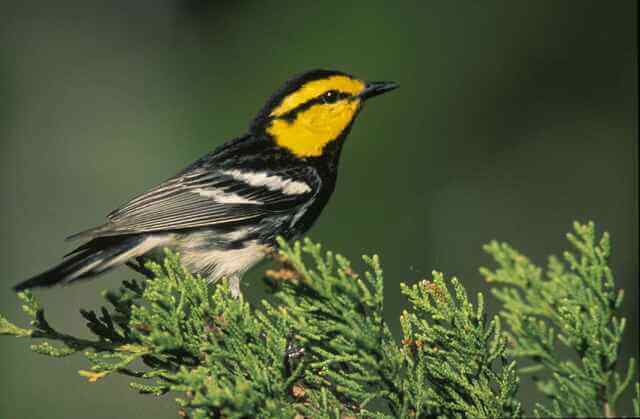
The Golden-cheeked Warbler (Setophaga chrysoparia) is a small, migratory bird found primarily in central Texas during the breeding season. Its name comes from the striking yellow-gold patch on its cheeks, which contrasts with its black head and back. These birds breed exclusively in oak-juniper woodlands, where they build their nests using bark strips and spider webs.
Their diet consists mainly of insects and spiders, making them an important part of the ecosystem. In terms of similarities and differences to the Oriole, the Golden-cheeked Warbler is smaller and lacks the bright orange coloration of the Oriole.
The Golden-cheeked Warbler is also restricted to a much smaller range, only breeding in central Texas, while the Oriole can be found throughout much of North and South America.
Unlike the Oriole, which prefers open habitats such as orchards and gardens, the Golden-cheeked Warbler is strictly associated with woodland habitats. Despite these differences, both species are known for their beautiful and distinct vocalizations and are highly sought after by birdwatchers.
Read more: How to Attract Warblers to your Yard? (Expert Tips)
American Robin
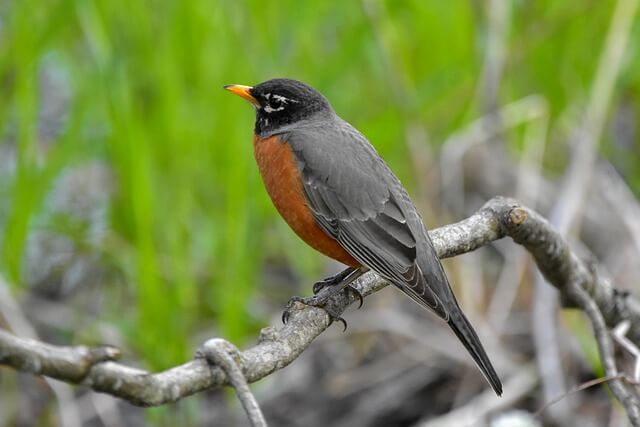
The American Robin (Turdus migratorius) is a migratory songbird found throughout North America, from Alaska to Mexico. These birds are known for their reddish-orange breast and white belly, with grayish-brown feathers on their back and wings. They prefer open woodlands, parks, and gardens as their habitat, and feed on insects, fruits, and berries.
In terms of similarities and differences to the Oriole, both species have a similar diet of insects and fruits. However, Orioles tend to be found in more tropical or subtropical regions, while American Robins are found in a wider range of habitats across North America.
Orioles also tend to be smaller and have more vibrant coloration, with bright oranges, yellows, and greens. Additionally, Orioles are known for their unique nest-building habits, while American Robins build more traditional cup-shaped nests.
Overall, both species are beloved members of the songbird family and continue to captivate birdwatchers around the world.
Related Articles: How To Attract Robins To Your Yard? A Step-By-Step Guide!
Black-headed Grosbeak
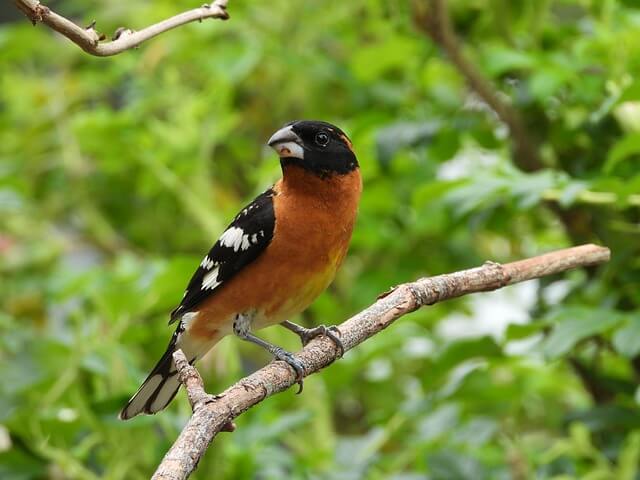
The Black-headed Grosbeak (Pheucticus melanocephalus) is a striking songbird found throughout western North America, from British Columbia to Mexico. Males have a bold black head, bright orange breast, and black wings, while females are a more muted brown and yellow. They inhabit open woodlands, scrublands, and forest edges and feed on a variety of seeds, insects, and fruits.
In terms of similarities and differences to the Oriole, both birds have a similar diet consisting of fruits and insects, but the Oriole’s range extends further eastward into North America, while the Grosbeak is primarily found in the western regions.
The Grosbeak is also larger than the Oriole, with a wingspan of up to 12 inches, and has a more robust beak. While the Oriole is known for its bright orange coloration, the male Grosbeak has orange on its breast and the female has a more subtle yellow hue.
Additionally, the Grosbeak’s song is a distinct warbling melody, while the Oriole has a distinct flute-like call.
Evening Grosbeak

The Evening Grosbeak (Coccothraustes vespertinus) is a medium-sized, stocky finch with a large, conical bill. They have a distinctive black and yellow pattern on their head and wings, and their body is primarily yellow, with black and white markings.
These birds are primarily found in coniferous forests in North America, including Canada and the western United States. They feed on seeds, nuts, and fruits, and are known to visit bird feeders in large flocks during the winter months.
In terms of similarities and differences to the Oriole, Evening Grosbeaks and Orioles have different ranges, with the former found in North America and the latter in the Americas, Europe, Asia, and Africa. While both species prefer forested habitats, Orioles are often found in more open woodlands and forest edges.
Diet-wise, Orioles primarily feed on insects, nectar, and fruit, while Evening Grosbeaks are primarily seed-eaters. Finally, Orioles are known for their bright orange and black plumage, while Evening Grosbeaks are primarily yellow and black.
Spotted Towhee
The Spotted Towhee (Pipilo maculatus) is a medium-sized sparrow found throughout western North America. They are known for their striking black and white plumage, with bright red eyes and a distinctive rust-colored patch on their sides.
These ground-dwelling birds prefer to live in brushy habitats such as chaparral, woodlands, and thickets, where they can forage for insects, seeds, and berries. In terms of similarities and differences to the Oriole, the two birds have distinct differences in appearance, diet, and habitat.
While the Spotted Towhee is primarily a ground-dwelling bird, the Oriole is known for its acrobatic maneuvers in trees and shrubs. The Oriole’s bright orange plumage also sets it apart from the Towhee’s black and white coloring.
Additionally, the Oriole’s diet consists mainly of nectar, fruit, and insects, while the Towhee is primarily a seed-eater. Despite these differences, both species are beloved songbirds and are known for their melodious calls and beautiful songs.
Read more: How to Attract Towhee to your backyard? Expert Tips!
Eastern Towhee

The Eastern Towhee (Pipilo erythrophthalmus) is a sparrow-sized bird found throughout the eastern United States. These birds are known for their distinctive black, white, and rusty-red plumage, with a bold white belly and dark eyes.
They prefer to live in shrubby habitats, including woodlands, forests, and brushy areas, where they forage for insects, seeds, and berries. Eastern Towhees are also known for their distinctive “drink-your-tea” call, which can often be heard in their preferred habitats.
In terms of similarities and differences to the Oriole, Eastern Towhees and orioles have different ranges, with Eastern Towhees found primarily in the eastern United States, while orioles have a broader range throughout North and South America.
Additionally, Eastern Towhees have a more terrestrial habitat, while orioles are more commonly found in trees. Eastern Towhees have a more diverse diet, including insects and seeds, while orioles primarily feed on nectar and fruit.
Finally, Eastern Towhees are smaller and have a different appearance, with their distinctive black, white, and rust-colored plumage, compared to the bright orange and black plumage of orioles.
Barn Swallow
The Barn Swallow (Hirundo rustica) is a migratory passerine bird found in Europe, Asia, Africa, and the Americas. These acrobatic birds are known for their striking blue and rust-colored plumage, long forked tails, and agile flight patterns. They prefer to live in open habitats such as fields, meadows, and wetlands, and feed on a diet consisting mainly of insects.
Their distinctive mud nests can be found attached to walls, cliffs, and other vertical surfaces. In terms of similarities and differences to the Oriole, while both birds have similar diets of insects, they inhabit different regions and habitats.
Barn Swallows are found in more open areas, while Orioles prefer forested habitats. Additionally, the Barn Swallow is smaller in size, measuring around 6–7 inches in length, while the Oriole can reach up to 8 inches.
The Oriole’s plumage is typically more brightly colored, with oranges, yellows, and blacks, while the Barn Swallow’s blue and rust coloring is more muted. Finally, while both species are known for their acrobatic flight patterns, the Oriole is primarily arboreal, while the Barn Swallow is more adapted to open flight.
Read more: How to Attract Swallows to my Yard? (The Expert’s Guide)
Blackburnian Warbler
The Blackburnian Warbler (Setophaga fusca) is a strikingly beautiful New World warbler, known for its bright orange throat and contrasting black and white plumage. These small birds measure around 4.5 inches in length and can be found in the boreal forests of North America during breeding season, and in South America during the winter.
Their preferred habitat includes coniferous forests and mountainous regions, where they forage on insects and spiders. Compared to the Oriole, Blackburnian Warblers have a more limited range and prefer cooler, forested habitats.
They are also smaller in size, measuring around half the length of an Oriole. While both species feed primarily on insects, Blackburnian Warblers are exclusively insectivorous, while Orioles also consume nectar, fruit, and seeds.
Additionally, while both birds have brightly colored plumage, the Oriole’s coloration is typically more yellow-orange, and their behavior tends to be more social and vocal than the Blackburnian Warbler’s shy and elusive nature.
Eastern Meadowlark
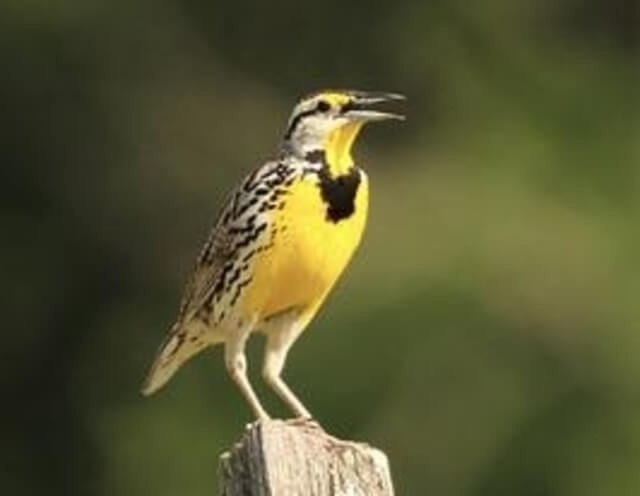
The Eastern Meadowlark (Sturnella magna) is a medium-sized grassland bird found throughout eastern and central North America. These distinctive birds are known for their vibrant yellow underparts and black and white striped heads.
They prefer to live in open fields and grasslands and can often be seen perched on fence posts or singing from a low tree branch. Their diet consists of insects and seeds, with a preference for grasshoppers and crickets.
In terms of similarities and differences to the Oriole, while both birds share similar ranges across North America, the Eastern Meadowlark prefers open grasslands to the Oriole’s preference for forest edges and urban areas.
Additionally, while both birds have vibrant yellow coloration, the Eastern Meadowlark has a striped head and lacks the black bib that is characteristic of the Oriole. The Eastern Meadowlark is also slightly larger, measuring up to 10 inches in length compared to the Oriole’s 7–8 inches.
Despite these differences, both the Eastern Meadowlark and Oriole are beloved members of the songbird family and continue to delight birdwatchers with their beautiful songs and striking appearances.
Western Meadowlark
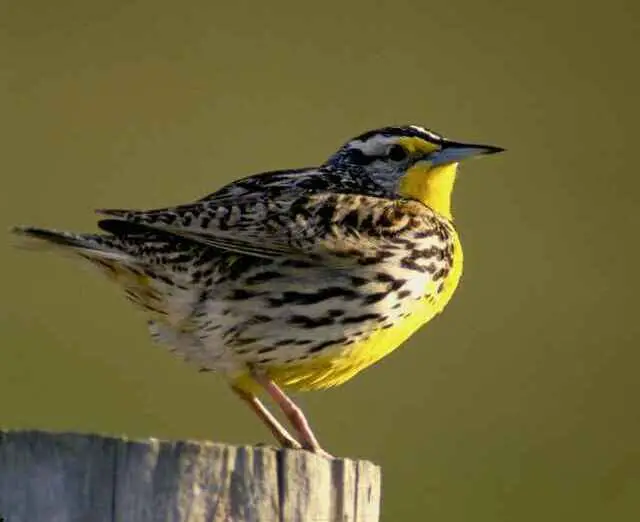
The Western Meadowlark (Sturnella neglecta) is a songbird species native to grasslands in North America. They are about 8–11 inches long, have brown and black streaked upperparts, yellow underparts, and a distinctive black “V” on their chest. They feed on insects, seeds, and fruits, and can be found in open habitats such as grasslands, prairies, and agricultural fields throughout western North America.
In terms of similarities and differences to the Oriole, Western Meadowlarks are typically found in different habitats than Orioles, with meadowlarks preferring grasslands and Orioles being more common in wooded areas. While both species feed on insects, Orioles primarily feed on nectar and fruit as well.
Western Meadowlarks are also larger and have a different coloration than Orioles, with a yellow and brown coloration compared to the bright orange and black of the Oriole.
While both species are known for their melodious songs, Western Meadowlarks are known for their flute-like calls while Orioles have a distinctive whistling song.
Read more: Western Meadowlark Bird Facts You Didn’t Know
Conclusion
In conclusion, knowing the various birds that look like orioles can be a valuable skill for bird watchers and nature enthusiasts. By understanding the differences between these similar-looking species, you can easily identify the bird you are observing.
Attracting orioles to your backyard can also be a rewarding experience, and following the tips provided can increase your chances of seeing these vibrant birds up close.
Related Posts:

